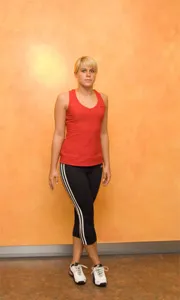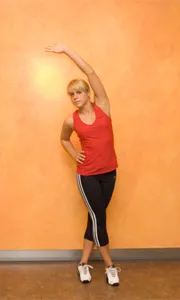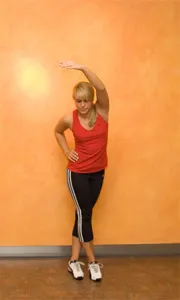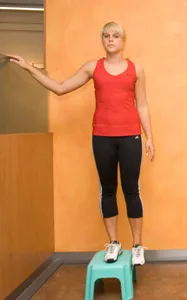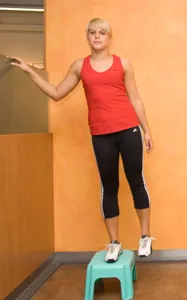Sports Medicine
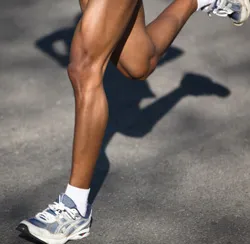
Stand upright. Cross your legs. The leg you're exercising is behind you (scissor step). Make sure the knee of your back leg is tucked in. In our illustration, the left ligament is stretched. If you find yourself off balance while performing the exercise, you can also lightly support yourself with your buttocks on a wall.
Tilt your upper body toward the side you're not exercising (to the right in our illustration). You should lean to the side until you feel tension above the hip on the leg you're exercising. To increase body tension, stretch the arm on the affected side in the direction you're leaning. Hold this tension for about 10 seconds.
To further enhance the stretching effect, bend your upper body slightly forward. This will increase the tension and stretch on the iliotibial band. Hold this position for about 10 seconds.
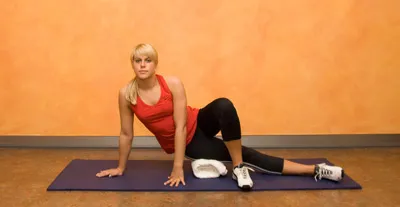
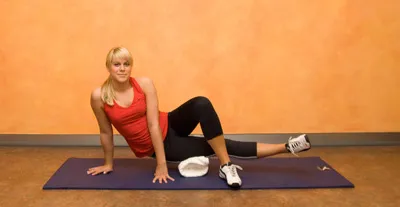
Stand with the leg you're exercising on a step or a solid object. The leg on the side you're not exercising should be able to hang freely. For better stability, hold onto something with one hand.
Lower your pelvis on the side of the free-hanging leg, keeping both knees straight if possible.
Now lift your pelvis again. Repeat the exercise 15 times, preferably several times a day.




